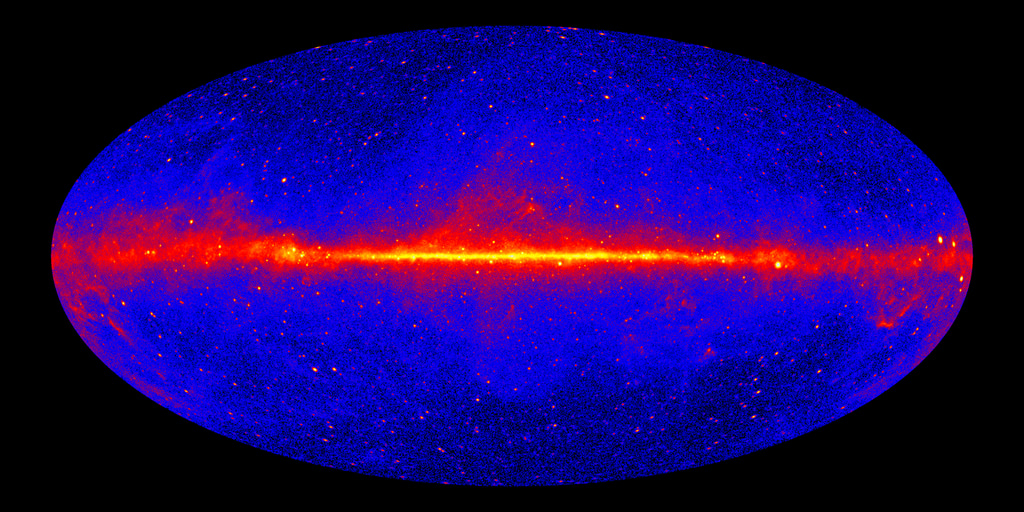X-ray binaries are astrophysical systems within our Galaxy composed of a star slowly ripped apart by its black hole companion. That process, known as accretion, makes the star’s material flow out of its outer layers and form a plasma disc around the black hole. This disc is heated up to tens of thousands of degrees Celsius, producing ultraviolet light and X-rays, making it shine even brighter than the star itself. These sources can be so luminous that an X-ray binary was the first X-ray source ever detected outside the Solar System! Yet X-ray binaries have another interesting property: they can produce powerful jets (collimated outflows of plasma), whose development is intimately linked to the disc. If jets are present in an X-ray binary, astrophysicists use the term microquasar to define it.
After its launch in 2008, NASA’s satellite Fermi discovered that those jets could also act as particle accelerators. With its Large Area Telescope detector, Fermi measured gamma rays from an X-ray binary, a radiation naturally produced if particles were accelerated in the jet. However, theoretical models could only match the data if these particles were electrons. In regions with large densities of light particles (called photons), relativistic electrons can interact with them, transferring their energy and converting them into gamma rays. Massive stars are much brighter than those with low mass, and therefore X-ray binaries containing massive components were thought to be the only ones capable of emitting gamma rays. Indeed, the only three microquasars detected previously by Fermi contain stars at least ten times more massive than the Sun.
Image credit: Credit: Science Communication Lab for MPIK/H.E.S.S.

